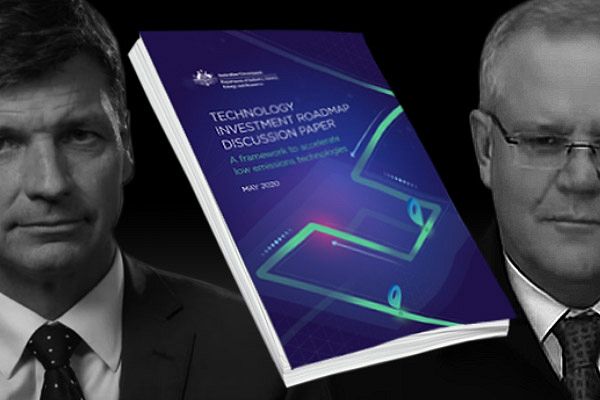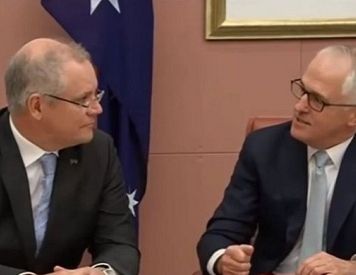A government department strategy on low emissions energy production will cause harm to both the environment and economy, writes Richard Gillies.
IN MAY, the Department of Industry, Science, Energy and Resources released a discussion paper entitled ‘A framework to accelerate low emissions technologies’. Despite identifying in the paper that ‘solar and wind are already the cheapest forms of generation on a pure energy collection and generation basis’, the Government names not solar and wind, but pumped hydro, ‘hydrogen demonstration projects’, electric vehicle charging networks and biofuels production as key technologies it will support.
These “clean” energy projects will, at best, do nothing to decrease greenhouse gas emissions. At worst, they will increase greenhouse gas emissions and power prices. Many, too, will increase demand for coal and gas.
Hydrogen
There are several methods of producing hydrogen. About 95% of hydrogen is produced through a process called steam reforming. This involves introducing a fuel source to steam. Fuel sources used for this process are hydrocarbons. Coal and gas are examples of hydrocarbons, but methane is most commonly used. The fuel and the steam are put under high pressures. The oxygen and hydrogen in the steam then separate and carbon dioxide is generated as a by-product.
Hydrogen is famously very flammable and can be burnt later to provide a source of energy. As carbon dioxide is a product of this process, using hydrogen as an energy source in this way would increase Australia’s greenhouse gas emissions. Generating energy in this way is also more expensive than just burning the fuel source without first extracting the hydrogen.
The Government does not indent to produce hydrogen in this way.
In the discussion paper, it is noted that:
‘...unless otherwise indicated, references to hydrogen in this report refer to clean hydrogen. Clean hydrogen is produced using renewable energy or using fossil fuels with substantial carbon capture and storage (CCS).’
Renewable sources can be used to produce hydrogen by running an electric current through water. However, fossil fuels contain much more energy than water. This makes the process of extracting hydrogen from water much more expensive than extracting hydrogen from fossil fuels.
Using carbon capture and storage to minimise the greenhouse gases emitted during hydrogen production will work, however, energy is required to capture and subsequently store carbon. Using carbon capture and storage techniques with hydrogen production will make a power source that is already more expensive than coal, gas, wind and solar even costlier.
Hydrogen as a power source is already more expensive than wind and solar and the Government is pursuing those strategies can only make hydrogen – and our power bills – more expensive. In the case of combining hydrogen production with carbon capture and storage, our power bills will get more expensive and demand for fossil fuels will be increased.
Electric vehicle charging networks
In all states except for Tasmania and South Australia, electric vehicles will cause increases in greenhouse gas emissions. This is because other states have a heavy reliance on fossil fuels for energy production. As such, any investment in electric vehicle charging networks, without investment in renewable energy, will only increase demand for fossil fuels.
Coal generates more carbon dioxide per unit of energy produced than petrol. Proponents of electric vehicles note that electric vehicle engines are more efficient than combustion engines. Modelling shows that electric cars driven in a country with reliance on fossil fuels any greater than 75% will emit more carbon dioxide than petrol-powered cars.
At 94%, Australia far exceeds this threshold. With Australia’s current energy mix, electric-powered cars have little, if any, potential to reduce Australia’s greenhouse gas emissions. They will, however, increase power prices because they will increase demand for electricity.
Pumped hydro
Pumped hydro works by using power to pump water uphill. Later, this water is allowed to flow downhill through a turbine to generate power. As pumped hydro requires power for pumping water, it increases demand for electricity and will, therefore, cause power prices to increase.
The largest upcoming pumped hydro project is Snowy 2.0. Modelling posted on Snowy Hydro Limited’s own website confirms that Snowy 2.0 will cause an increase in power prices.
As previously mentioned, the primary sources of power generation outside of Tasmania and South Australia are coal and gas. As Snowy 2.0 is located in New South Wales, the Government’s investment in pumped hydro will only increase greenhouse gas emissions.
Biofuels
Biofuels are organic materials that are used for energy production. Burning these materials causes the release of carbon dioxide. Despite this, the United Nations classifies energy derived from biofuels as renewable because the materials that are burnt once absorbed carbon dioxide from the atmosphere.
Therefore, biofuels only have the potential to decrease greenhouse gas emissions if the total amount of carbon dioxide absorbed by the fuel source is equal to or greater than the amount of carbon dioxide that is released when the fuel is burnt. This occurs in some cases. In other cases, biofuel-fired power plants produce more carbon dioxide per unit energy than fossil fuel-fired plants.
The discussion paper mentions ‘energy from waste’ as a solution to decrease greenhouse gas emissions. There are a few ways to produce energy from waste, most involve burning waste from landfill to produce energy. Burning waste produces carbon dioxide, but at least some of what is burnt, if it is organic material, absorbed carbon dioxide from the atmosphere during its life. There is some contention as to whether burning waste can reduce greenhouse gas emissions.
Biofuels also have no potential to lower power prices as energy derived from biofuels is about six times more expensive than coal, gas, wind and solar. Amusingly, the discussion paper mentions the possibility of combing carbon capture and storage. That would make a source of power that is already about six times more expensive than wind or solar even more expensive.
Storage
In the discussion paper, the Government stresses that by investing in energy storage technologies such as hydrogen and hydro, they aim to overcome the intermittent nature of solar and wind as power sources. This is ostensibly a worthwhile goal, but it may not be necessary.
For example, Denmark’s energy mix contains more than five times as much renewable energy as Australia’s. Despite this, storage makes up about 1% of their energy mix.
The cheapest means of energy storage, by far, being pursued by the Government is pumped hydro. The largest pumped hydro project is Snowy 2.0 with an estimated cost of $12 billion so far. Solar farms with greater capacity have been built for less than one-fifth of that price.
Many will probably know from experience that the greatest time of power consumption is the afternoons of extremely hot days. This is when blackouts, if they occur, are likely. Sunlight is generally plentiful during these times. If the Government chose to spend $12 billion on solar farms instead of Snowy 2.0, there would be about five times as much power produced exactly when demand is highest.
Since solar panels and windmills do not result in a net increase in demand for electricity, this further compounds the advantage of investing in these technologies over pumped hydro.
More gas means more renewables
Australia has the highest greenhouse gas emissions in the developed world. We also pay some of the highest prices for electricity in the world. Instead of investing in projects which will lower prices and decrease greenhouse gas emissions, the Government seems intent on using taxpayers’ money to find creative ways of increasing demand for fossil fuels.
This is to the benefit of some of the largest political donors in Australia — which are in the mining industry. The Government then has the audacity to market to us expensive, highly polluting, technologies which we pay for as “clean energy”.
The tendency for the Government to invest in technologies which increase demand for coal or gas as a means of reducing greenhouse gas emissions does not seem to be a mere mistake or oversight. Minister for Energy and Emissions Reductions Angus Taylor may have given the game away when he told the Sydney Morning Herald that “more gas means more capacity to absorb renewables [into the grid]”.
Angus Taylor seems to believe that using more gas, which is not renewable, will result in Australia using more renewable energy.
Richard Gillies is a scientist.
Related Articles
- Santos abandons chemical waste on public road
- Starving amidst plenty: Australia’s oil dependency problem
- One hundred per cent renewable electricity for Australia
 This work is licensed under a Creative Commons Attribution-NonCommercial-NoDerivs 3.0 Australia License
This work is licensed under a Creative Commons Attribution-NonCommercial-NoDerivs 3.0 Australia License
Support independent journalism Subscribe to IA.















